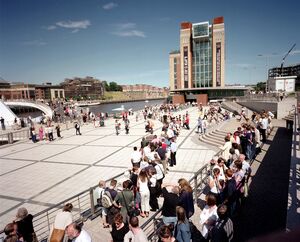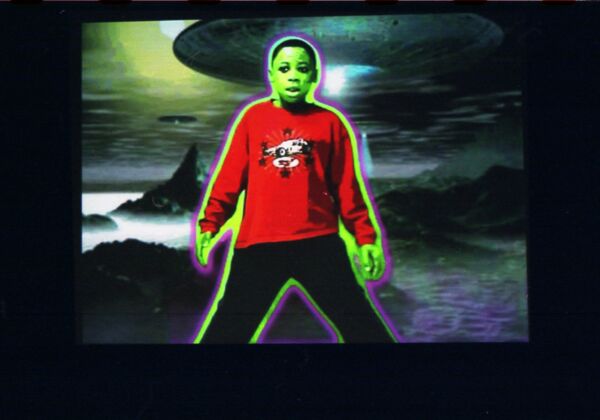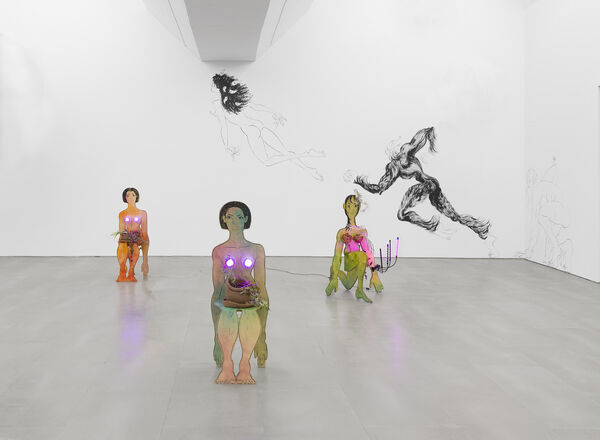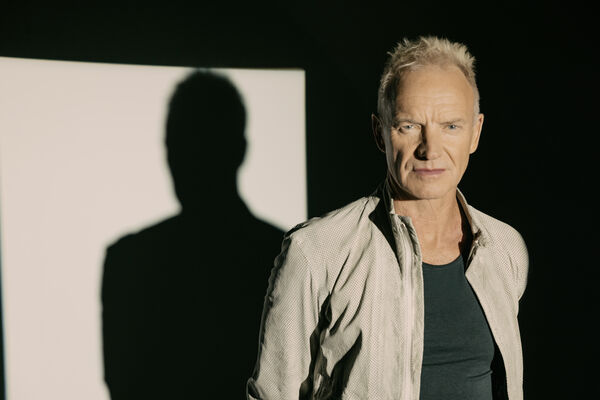Looking Forward with Sarah Munro
25 Jul 2022
David Whetstone talks to director Sarah Munro about running an art institution in challenging times.

Never mind naysayers who predicted it would be short-lived. Baltic Centre for Contemporary Art has turned 20 – and a weekend party is planned.
Far from being a flash in the pan, Gateshead’s famous attraction will soon welcome its nine millionth visitor.
That’s something few would have predicted when it opened just after midnight on July 13, 2002, despite the hundreds who queued to get in.
Gateshead’s ‘art factory’, as founding director Sune Nordgren conceived it, was a £50m statement of ambition, the biggest contemporary art space outside London.
Some lottery-funded projects failed. Baltic has thrived, mounting a string of major exhibitions and hosting the Turner Prize in 2011.
Time, then, for current director Sarah Munro to reflect on achievements and challenges.
Amid the hubbub of Baltic’s Front Room, where hot drinks (for now) are free, she remembers being a regular early visitor.
“I was director of the Collective gallery in Edinburgh and there was no-one in the art world who wasn’t impressed by the boldness of Baltic’s vision.
“Chad McCail was one of the first artists-in-residence and he’s a close friend, so we came down to see him.
“And I’ve got a photo of me with my son, then about six weeks old, on the Millennium Bridge. He’s 19 now and still has the poster from the exhibition we saw.”
By the time Sarah became Baltic’s fifth director in 2015, she had an impressive record of cultural leadership in Scotland.
But already the lavish Baltic budgets of the early years had gone, austerity having reduced funding streams from Gateshead Council and Arts Council England.
Unfazed, Sarah recalls: “I started out in my career running artist-led spaces where you got used to making every penny count.”
And perhaps Baltic was ripe for change.
“Places go through different iterations and I did feel that while the narrative had always been about the factory and the making, it had become quite museum-like.
“It felt as if some experimental stuff had been lost, the residencies and performances. It felt as Baltic had become this singular voice with the focus very much on the gallery spaces.
“I’ve always been interested in multiple voices and understandings.
“Of course, in the last 20 years our context has changed in so many ways. When Baltic opened it didn’t have a mobile phone. It’s not long ago that we were writing letters to artists.
“Economies have changed and an institution has to be responsive to the times and conditions around it.”
Sarah followed her instincts, looking locally and asking herself: “How do you deeply embed your relationship with communities? How do you ensure people feel this is for them?”
She resisted the temptation when programming to go for “oven-ready” exhibitions.
Well, mostly.
She recalls with pride the moment she realised, after taking up her post in November, that there was no headline summer exhibition planned for the following year. She acted decisively.
“That was The Playground Project and we hired it from a big centre for contemporary art in Geneva.
“There were complex ideas involved but if you were four years old it meant you could hang upside down and fall into a sandpit.
“It was an interesting moment because people suddenly realised they had to think about art not just as a painting or a sculpture.
“The audience figures were phenomenal, showing massive demand. It wasn’t soft play or a kids’ exhibition but it surprised people.
“I remember someone saying, ‘But they’re having parties up there!’ and going, ‘Good!’”


The Playground Project, looking at the history of public playgrounds and featuring climbable creations, started a ‘play’ strand running through Baltic’s activities.
This summer’s Equal Play by artist and educator Albert Potrony is its latest manifestation.
Sarah talks of the balance to be struck between the established and the up-and-coming.
“I’ve always been interested in how you enable artists to have step-change moments, so in a lot of the programme now we’re working with artists at a much earlier stage.
“Look at what Joy Labinjo did here with her first solo show (the Newcastle University graduate saw interest in her paintings soar after Baltic displayed them in 2019).
“We’re giving opportunities to take risks much earlier.”
Sarah stresses the importance, post-Brexit, of not becoming inward-looking.
An artist exchange programme was set up between artists in the North East artists and the Baltic states.
Meanwhile, international artists whose work chimes with North East communities will, it seems, find favour.
Carolina Caycedo, a Colombian artist based in Los Angeles, focuses on the destructive consequences of hydroelectric schemes.
Before her current Baltic exhibition, though, she met the Women’s Banner Group in Durham and researched for an epic new drawing called Tyne Catchment.
In her first major UK show, therefore, global themes are given a North East perspective. The Kielder reservoir, it is worth noting, was opened 40 years ago.
Sarah is proud to have increased the representation of women in the galleries.
Most of Baltic’s senior roles are now held by women and Sarah, the first female director, is keen to point out that on International Women’s Day in 2018, all its galleries were showing work by women.
Sensing a softer touch in Baltic’s work can’t just be fanciful. Recently it became the UK’s first Gallery of Sanctuary for its welcoming approach to refugees and asylum seekers.
During the Covid-19 pandemic, activity packs were distributed to Baltic’s local communities. As Sarah says: “If you want to be neighbourly, you don’t disappear in hard times.”
Reopening after lockdown, the now vacant ground floor café was reopened as Front Room, a community space with free tea and coffee available (donations welcome).
It might not last, says Sarah, but it was a gesture. “My family’s from the Orkneys and my granny would always offer tea and a scone.
“If I’d had to take a business plan to my trustees it might not have happened but we had an empty space, we knew people were struggling and we thought: let’s do the generous thing.”
Baltic, 20 years on, is attuned to the climate emergency, in touch with its local communities, established as an international institution and still exciting visitors who arrive in their droves.
One third of those visitors are family groups or young people and most will find nothing incongruous about its activities. It has become part of the fabric.
Looking ahead, Sarah says: “I can’t predict the future but we know the next few years are full of challenge for ourselves and our communities.
“But I also know there is more need than ever for public institutions that create space for people to connect, engage, learn and play.
“Art is powerful in such times, be it to imagine new futures or simply escape for a few hours from today’s pressures.
“Baltic will change but I’m confident it will continue to bring art and people together for another 20 years.”
Baltic Birthday Weekend, this Saturday and Sunday (10am to 6pm), features a programme of special activities including creative workshops, fanzines, performances, street food, a livestreamed DJ set and an art car boot sale. Find details on www.baltic.art




